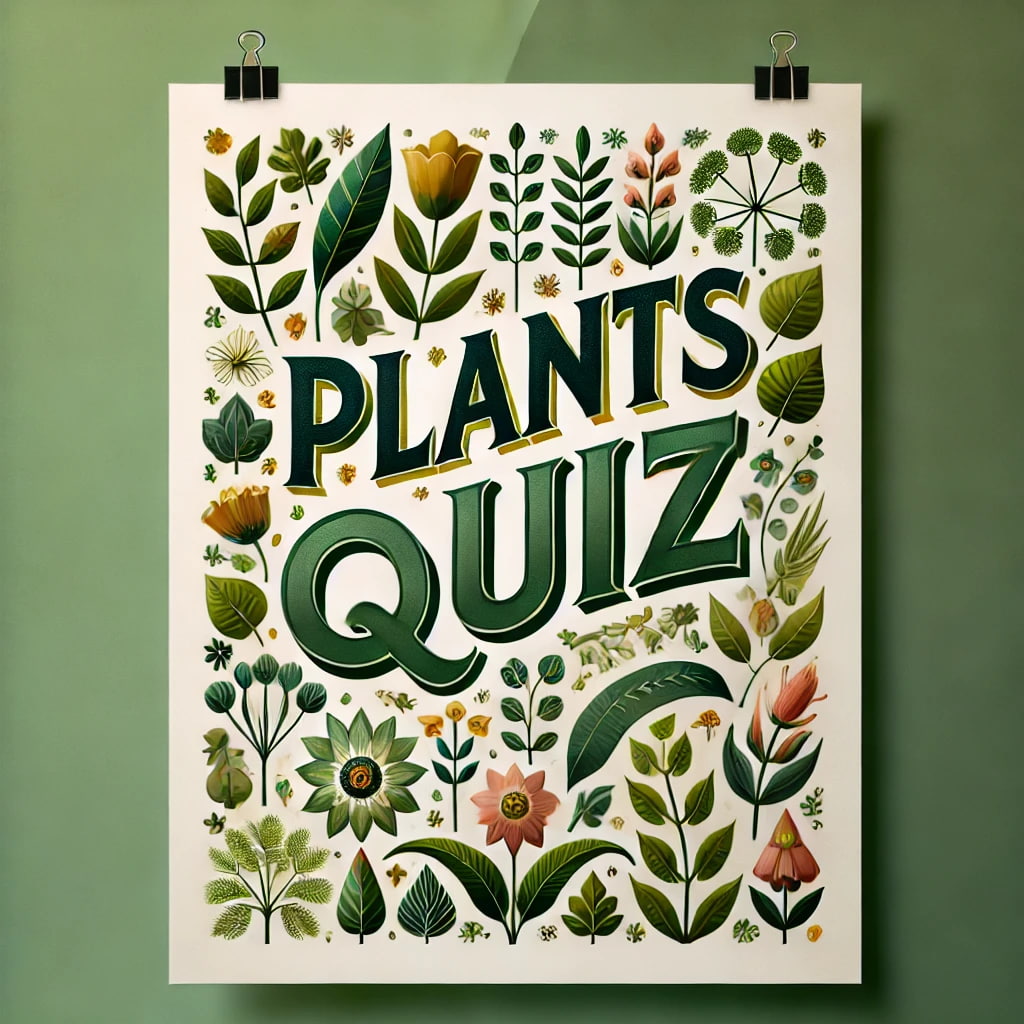Q1: What is the primary pigment involved in photosynthesis? (Plants)
A1: Chlorophyll
Q2: Select all the parts of a typical dicotyledonous plant: (Plants)
A2: Root, Stem, Leaf
Q3: Arrange the following stages of seed germination in the correct order. (Plants)
A3: Seed imbibes water, Radicle emerges, Shoot appears
Q4: Which of the following is a monocotyledon? (Plants)
A4: Lily
Q5: Use some of the following answers to fill in the blanks: stomata, xylem, phloem, chloroplasts (Plants)
A5: Photosynthesis occurs in the chloroplasts, while water transport is facilitated by the xylem.
Q6: Which of the following is a multiple-choice question? (Plants)
A6: (Question removed)
Q7: Select all the functions of the plant root system: (Plants)
A7: Absorption of water and minerals, Anchorage of the plant, Storage of nutrients
Q8: Which plant hormone is primarily responsible for cell elongation? (Plants)
A8: Auxin
Q9: Use some of the following answers to fill in the blanks: angiosperms, gymnosperms, flowers, seeds (Plants)
A9: Angiosperms produce flowers, whereas gymnosperms produce exposed seeds.
Q10: What is the primary function of xylem in plants? (Plants)
A10: Transport of water and minerals
Q11: Select all the major types of plant tissues: (Plants)
A11: Dermal tissue, Vascular tissue, Meristematic tissue
Q12: Which of the following is a method of asexual reproduction in plants? (Plants)
A12: Vegetative propagation
Q13: What type of symbiotic relationship do mycorrhizal fungi have with plant roots? (Plants)
A13: Mutualism
Q14: Which of the following is NOT a function of the plant vascular system? (Plants)
A14: Production of food through photosynthesis
Q15: Match each plant hormone to its primary function. (Plants)
A15: Ethylene - Fruit ripening, Gibberellin - Stem elongation, Cytokinin - Cell division
Q16: What is the main difference between C3 and C4 plants? (Plants)
A16: C3 plants fix carbon directly in the Calvin cycle, whereas C4 plants use an additional pathway
Q17: Which of the following is a gymnosperm? (Plants)
A17: Pine
Q18: What type of plant is a fern? (Plants)
A18: Pteridophyte
Q19: Which of the following is a common deciduous tree? (Plants)
A19: Oak
Q20: What is the primary characteristic of monocotyledonous plants? (Plants)
A20: One seed leaf
Q21: Which of the following plants is a succulent? (Plants)
A21: Aloe Vera
Q22: What is the dominant type of vegetation in tropical rainforests? (Plants)
A22: Broadleaf evergreen trees
Q23: Which plant is known for its ability to fix nitrogen in the soil? (Plants)
A23: Clover
Q24: Which of the following is a common aquatic plant? (Plants)
A24: Water lily
Q25: What is the primary function of a plant's chlorophyll? (Plants)
A25: Capturing light energy for photosynthesis
Q26: Which of the following plants is known for its rapid growth and bamboo-like qualities? (Plants)
A26: Bamboo
Q27: What is the primary role of the cambium in woody plants? (Plants)
A27: Producing new layers of vascular tissue
Q28: Which of the following is a biennial plant? (Plants)
A28: Carrot
Q29: Which plant is commonly used in the production of rubber? (Plants)
A29: Hevea brasiliensis
Q30: Which of the following is a parasitic plant? (Plants)
A30: Dodder
Q31: Which of the following plants is known for its medicinal properties, especially in treating burns? (Plants)
A31: Aloe Vera
Q32: Which of the following plants is a member of the Orchidaceae family? (Plants)
A32: Vanilla
Q33: Which plant is known as the "king of flowers" and is highly prized for its large blooms? (Plants)
A33: Peony
Q34: Which of the following plants is an example of a carnivorous plant? (Plants)
A34: Venus Flytrap

